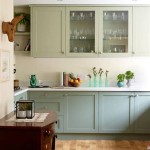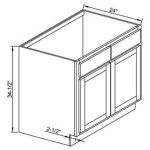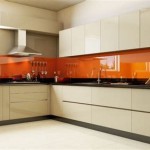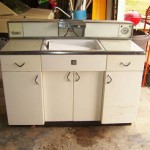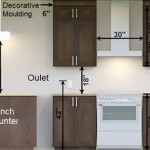What Is a Plinth in a Kitchen?
The kitchen plinth, often overlooked, plays a crucial role in both the aesthetics and functionality of a kitchen. It forms the base of the kitchen units, bridging the gap between the floor and the cabinets. Understanding its purpose and the different types available is essential for anyone planning a kitchen renovation or new build.
Key Functions of a Kitchen Plinth
The kitchen plinth serves several important functions:
- Concealing services: It hides unsightly plumbing and electrical wiring, contributing to a clean and finished look.
- Protecting cabinet bases: The plinth acts as a barrier against moisture, pests, and general wear and tear, prolonging the lifespan of the cabinets.
- Aesthetic appeal: It provides a seamless transition between the floor and the cabinets, enhancing the overall visual appeal of the kitchen.
- Kickboard space: The recessed area created by the plinth allows for comfortable standing while working at the countertops.
Materials Used for Kitchen Plinths
Kitchen plinths are typically made from several different materials, each with its own advantages and disadvantages:
- MDF (Medium-Density Fiberboard): A cost-effective and widely used option. MDF is easy to cut and install, and it can be painted to match the kitchen cabinets.
- PVC (Polyvinyl Chloride): A water-resistant and durable material that is ideal for kitchens prone to spills. PVC plinths are available in various colors and finishes.
- Wood: A more traditional option that offers a natural and warm look. Wood plinths can be painted, stained, or varnished to match the kitchen's style.
- Stainless Steel: A premium option that adds a modern and sleek touch to the kitchen. Stainless steel plinths are highly durable and resistant to corrosion.
Standard Plinth Heights
The height of a kitchen plinth typically ranges between 100mm and 150mm. The most common height is 150mm, which provides adequate space for concealing services and offering comfortable legroom. However, the optimal height may vary depending on individual preferences and the overall kitchen design.
Installation of Kitchen Plinths
Installing a kitchen plinth involves several steps:
- Accurate Measurement: Precisely measure the area where the plinth will be installed, taking into account any corners or irregularities.
- Cutting the Plinth: Cut the plinth material to the correct size using appropriate tools, ensuring clean and straight edges.
- Fixing the Plinth: Fix the plinth to the cabinet base using clips, screws, or adhesive, ensuring a secure and tight fit.
- Sealing the Edges: Seal the edges of the plinth with silicone sealant to prevent moisture ingress and create a seamless finish.
Ventilation and the Kitchen Plinth
For appliances like refrigerators and dishwashers, proper ventilation is crucial for efficient operation. Kitchen plinths can incorporate ventilation grilles to allow for airflow around these appliances, preventing overheating and ensuring optimal performance.
Maintaining the Kitchen Plinth
Regular cleaning is essential for maintaining the appearance and longevity of the kitchen plinth. Wipe down the plinth with a damp cloth and mild detergent to remove dirt and grime. Avoid using abrasive cleaners, which can damage the surface.
Choosing the Right Plinth for Your Kitchen
Selecting the appropriate kitchen plinth involves considering several factors:
- Budget: MDF is the most budget-friendly option, while stainless steel and wood are at the higher end of the price spectrum.
- Style: Choose a material and finish that complements the overall kitchen design, whether it's modern, traditional, or contemporary.
- Durability: Consider the level of moisture and wear and tear the plinth will be exposed to. PVC and stainless steel are ideal for high-traffic kitchens.
- Maintenance: Some materials, such as PVC, are easier to clean and maintain than others.
Accessibility and Kitchen Plinths
For accessible kitchens, considerations for the plinth are crucial. A recessed plinth allows for wheelchair users to approach the countertop comfortably, improving functionality and usability.
The Plinth as a Design Element
While primarily functional, the kitchen plinth can also serve as a design element. Contrasting colors or materials can add visual interest and create a focal point. Integrating LED lighting beneath the plinth can create a dramatic and stylish effect.

How To Fit Kitchen Plinths Pelmets Cornices

Common Kitchen Design Terminology Explained Bentons Kitchens

What Is Cornice Pelmet And Plinth In A Kitchen Kitchinsider

What Is Cornice Pelmet Plinth Diy Kitchens Advice

Kitchen Plinths Kickboards Plain Or Torus Plinth

Bespoke Plinth Faktum Ltd

What Is A Plinth Heater Central Heating

Plinth Lighting What Is It And How Does Work In A Kitchen

Kitchen Cupboard Plinth Kick Board Gloss Matt White Black Cream Oak Or Beech

What Is A Plinth In Kitchen Everything You Need To Know
Related Posts


